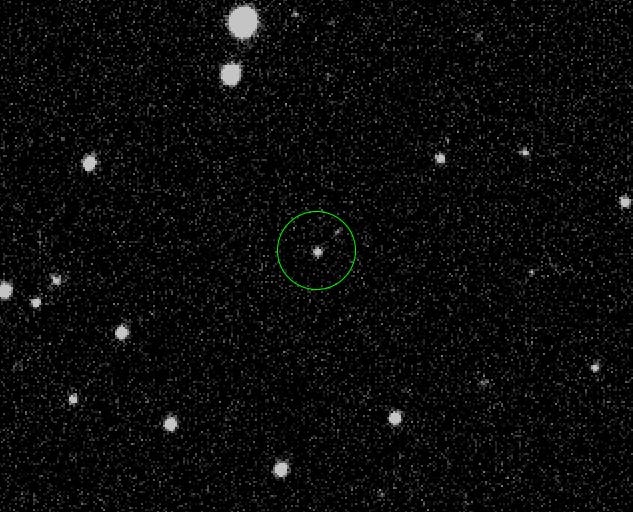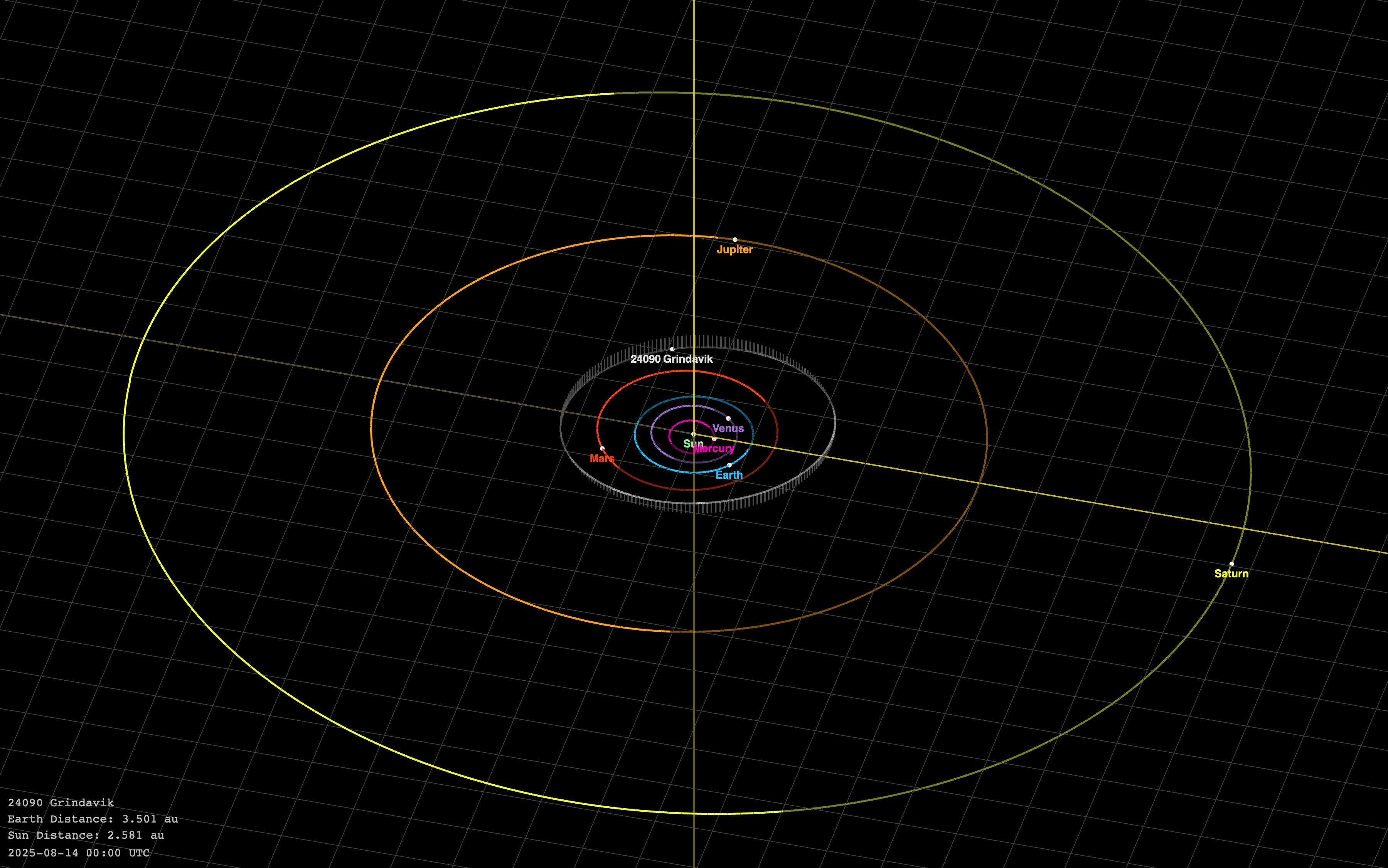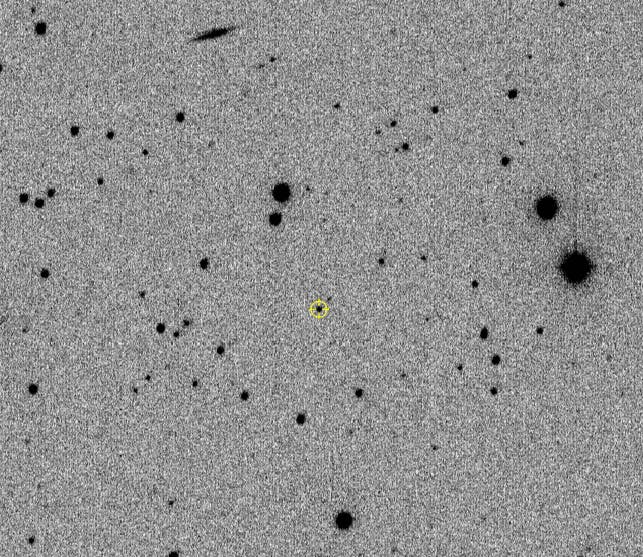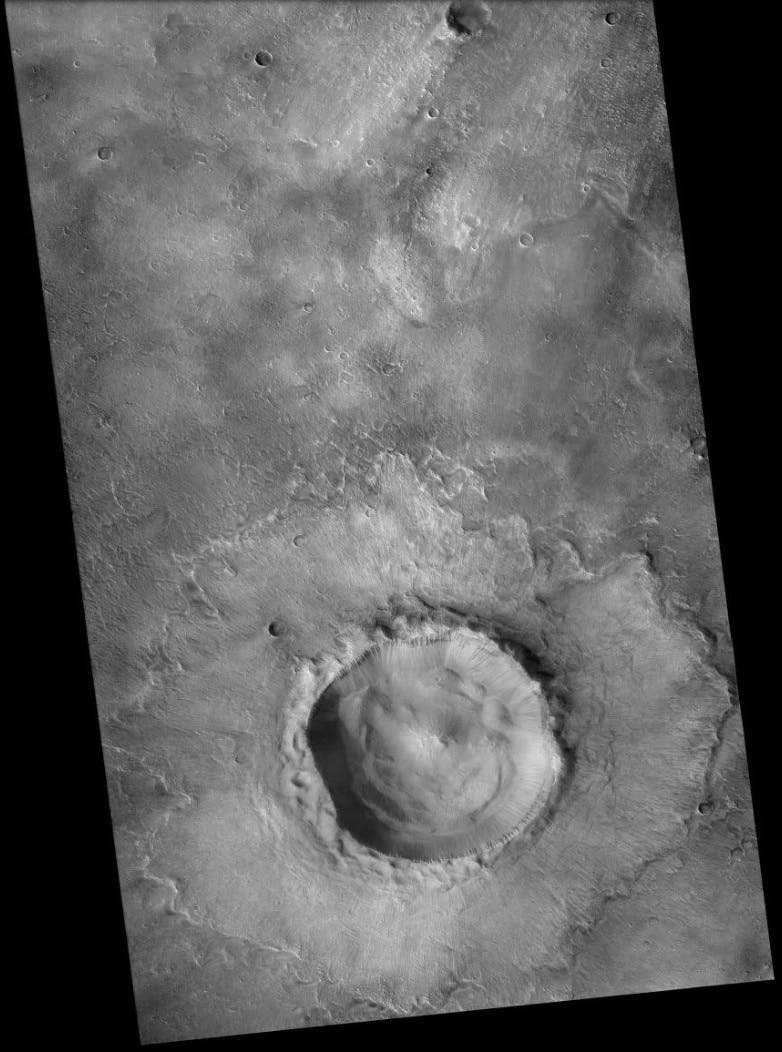
Asteroid named after Icelandic town Grindavík
Grindaví is now on Earth, the asteroid belt and on Mars
Asteroid discovered in 1999 has been named (24090) Grindavík. The International Astronomical Union confirmed the name in august 2025 after the town made headlines due to volcanic eruptions in its vicinity in the Reykjanes peninsula. See more data on the Minor Planet Center website.
The asteroid was discovered by the Catalina Sky Survey project in Arizona in the United States on October 29, 1999. Then it received the provisional designation 1999 UY8.
A German geology enthusiast, Daniel Bamberger, suggested the name. In an e-mail to Iceland at Night, Daniel said:
With the help of my friends at the Catalina Sky Survey in Arizona, I recently proposed to the International Astronomical Union (IAU) that an asteroid be named after the town of Grindavík. I'm excited to share that my proposal was accepted, and that the naming of asteroid 24090 Grindavík was officially announced today!
I chose this specific asteroid from the many minor planets discovered at Catalina for three reasons that tie it to the subject:
- It belongs to the Vesta family. Those are fragments of the large asteroid Vesta, whose composition closely matches that of terrestrial igneous rocks.
- Its number, which starts with 240, is a nod to Grindavík’s postal code.
- It regularly becomes bright enough to be photographed with small telescopes. This makes it accessible to amateur astronomers.

Where is (24090) Grindavík?
(24090) Grindavík is in the asteroid belt between Mars and Jupiter. Its average distance from the Sun is 2.3 astronomical units, roughly 345 million kilometres, or just over double the distance between the Earth and the Sun.
Grindavík orbits the Sun once every 3.57 years. The orbit is inclined by 5 degrees relative to the ecliptic.
Here you can see its current position in the solar system.

What's known about (24090) Grindavík?
Very little is known about (24090) Grindavík other than its orbit. Its magnitude (15.1) and albedo (0.159) suggests that it is roughly 2.1 km in diameter. Its albedo also suggests that it is made out of a rock similar to the basalt.

Grindavík on Earth, Mars and in the asteroid belt
Grindavík is not only on Earth and in the asteroid belt, but also on the red planet Mars. On Mars' northern hemisphere is a 12 km wide crater named Grindvík.

Sævar Helgi Bragason is an award winning astronomy and science communicator and educator, lecturer, author, TV host and owner and editor of icelandatnight.is and eclipse2026.is.


